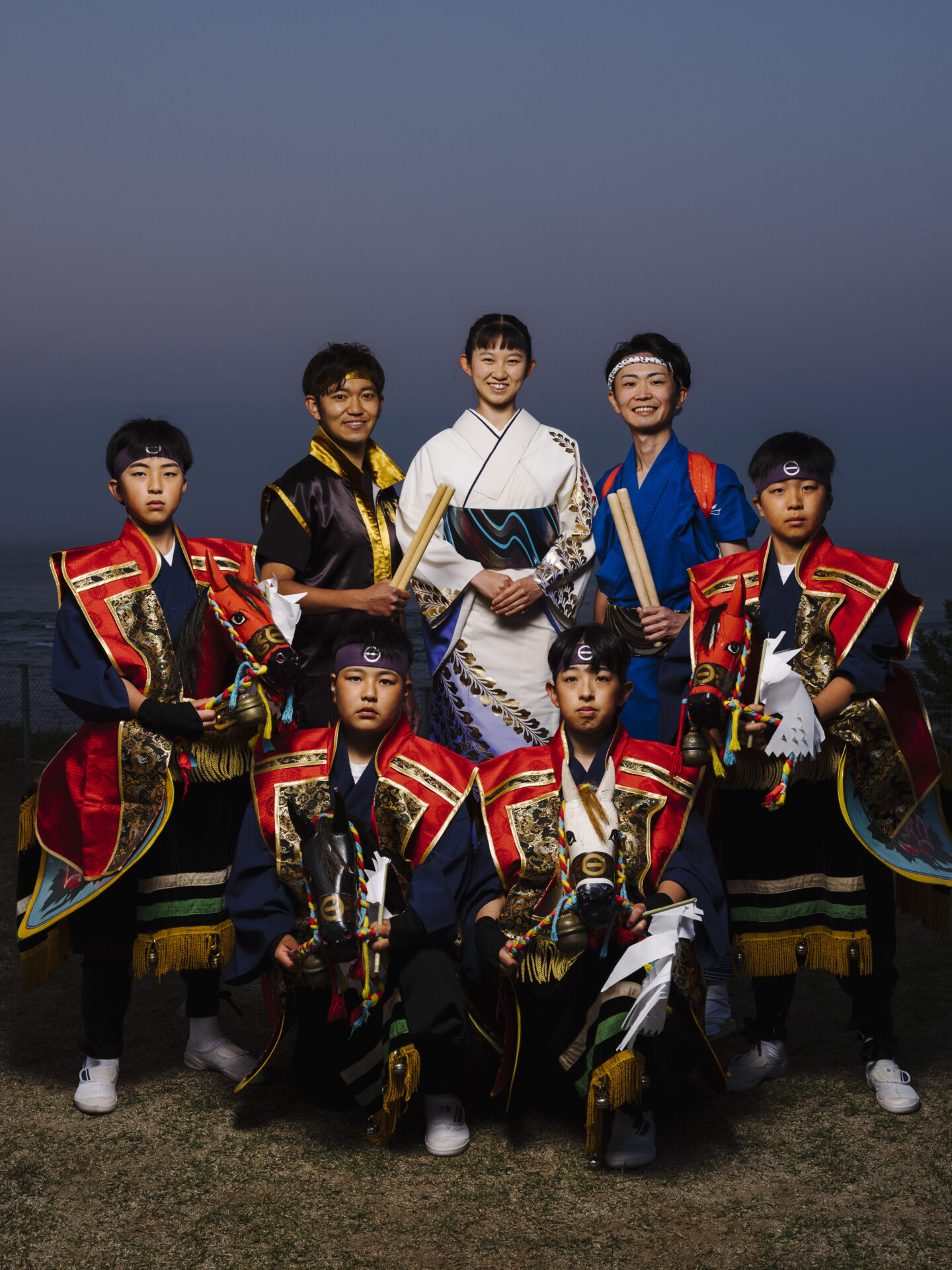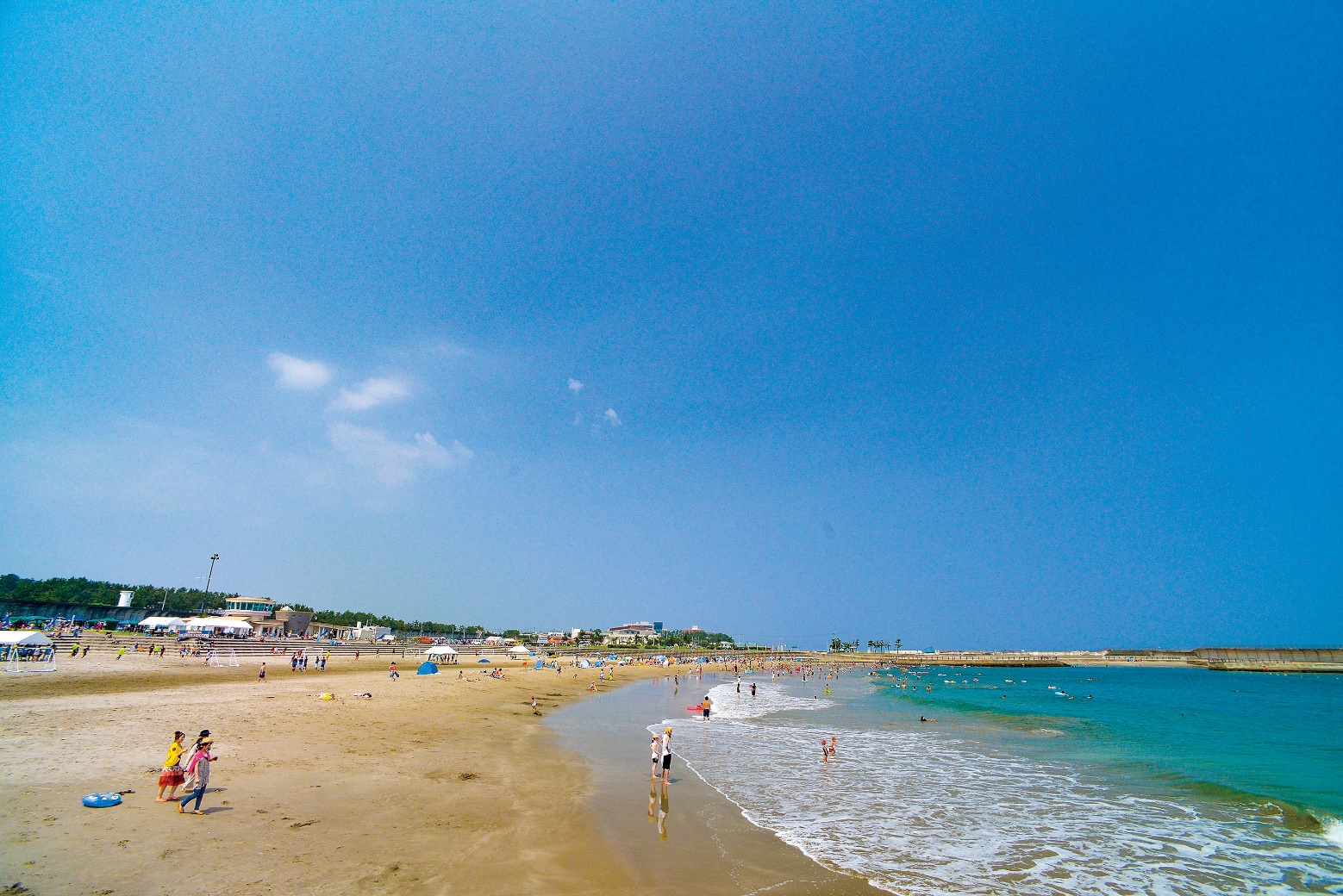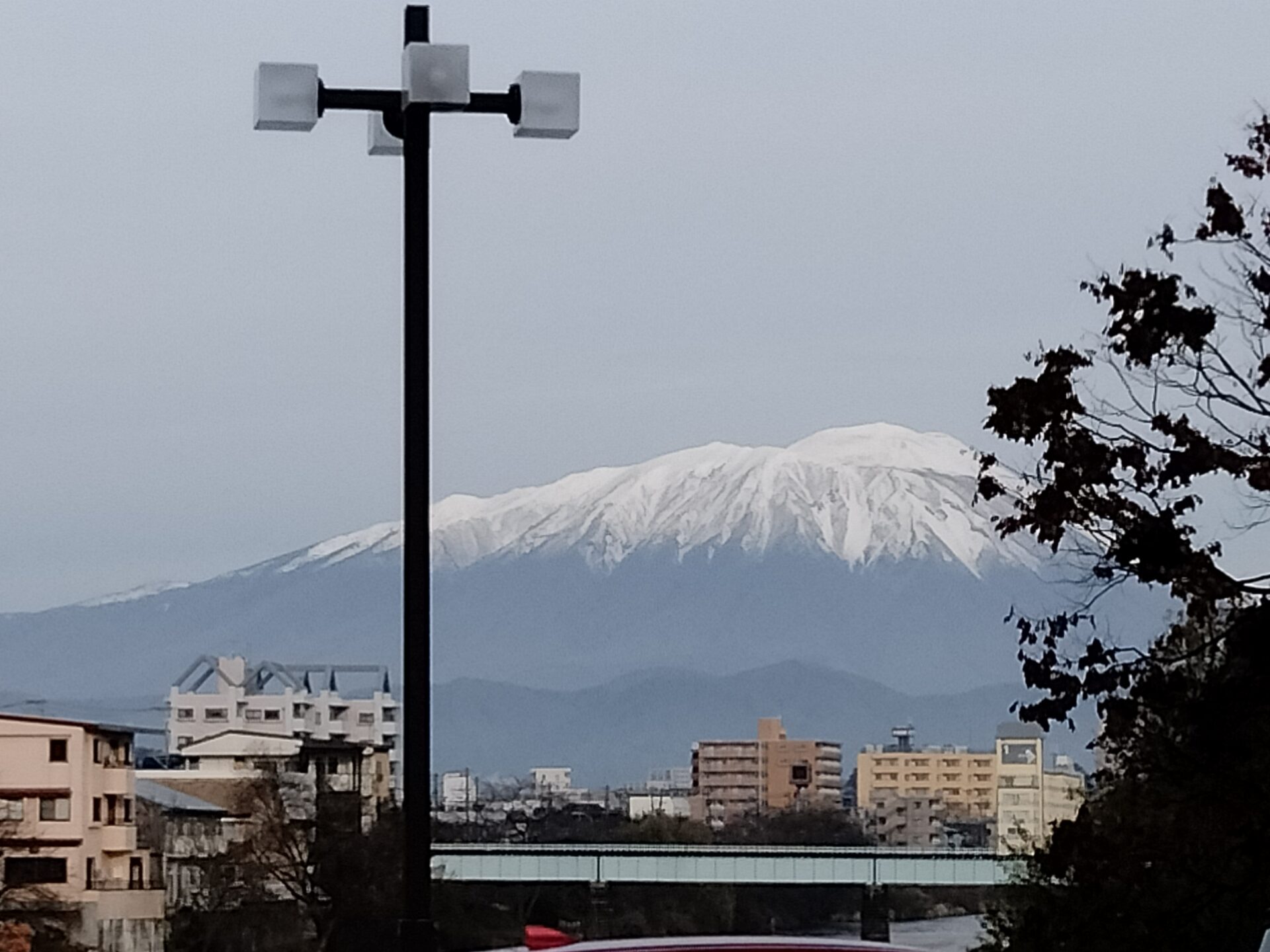EVENT
Suggested Route | Trip to Meet the Young Geinoh Practitioners 2Days and 1Night Sep.10th(Sat)-11th(Sun),2022
- 2022
- suggested-route
Route: From Tokyo to Morioka to Hirono
This is a two-day and one-night sightseeing route to enjoy one of the two major events of the Sanriku International Arts Festival, Sanriku Future Geinoh Festival, in which young geinoh practitioners will perform.
First, enjoy walking around town and eating in Morioka, the gateway to Iwate, where you will be greeted by the majestic Mt. Iwate. Next, come and see a lively performance by young performers in the town of Hirono on the Sanriku coast. There will also be time to experience other local folk performing arts. Enjoy the geinoh of Sanriku to your heart’s delight!
Please note that the suggested routes are not organized tours. They are designed to assist travelers in planning their trip and fully enjoy the Sanriku area.
Notices on Accommodations and Transportations
* Due to the Misawa Air Base Air Festival that is held in Misawa City, Aomori Prefecture on Saturday, Sep10 th, reservations for hotels will be hard to make in Hachinohe City, Aomori Prefecture and Hirono Town, Iwate Prefecture. Hence, we recommend that you make hotel reservations in Morioka City. In addition to using public transportation, you may consider car rentals.
* As part of COVID-19 countermeasures, there may be changes to the operating hours of public transportations, facilities and stores. Please check for any updates in advance.
Countermeasures against COVID-19
* To prevent the spread of COVID-19, please take note and follow the countermeasures indicated at each event, facility, and retail store.
Trip to Meet the Young Geinoh Practitioners (2 days/1 night)
Route: From Tokyo to Morioka to Hirono
Sep .10th (Sat)-11th(Sun),2022
| Day 1 Sep. 10th (Sat),2022 |
City Walk Through the Castle Town, Morioka – The Gateway to Iwate Prefecture
| Itinerary | remarks | |
|---|---|---|
| 12:20 | From Tokyo Sta. to Morioka Sta.(Arr. 14:32) | Tohoku Shinkansen -‘Hayabusa 23’ |
| 15:00 | Hotel Check-in | Stay the night around Morioka Station |
| City Stroll | Explore on foot or by bus | |
| Visit | Yoichi Street Market | ||
| Dinner | Taste Morioka’s popular noodle dishes and local beer | Around Morioka Station |
| Day 2 Sep. 11th(Sun),2022 |
Behold the Performance of Young Geinoh Practitioners Dancing in Hirono Town, with the Ocean (“Hiro”) and Highlands (“No”) Behind Them!
| Itinerary | remarks | |
|---|---|---|
| 08:00 | From Morioka Sta. to Hachinohe Sta.(Arr.09:21) | Tohoku Shinkansen ‘Hayabusa 1’ |
| 09:29 | From Hachinohe Sta. to Taneichi Sta.(Arr.10:24) | JR Hachinohe Line Kuji direction |
| 11:00 | Hirono Suisankaikan UNIQUE | Explore on foot |
| 11:30 | Hamanasu-tei Main Restaurant | Explore on foot |
| 12:30 | Dancing Through Hirono: The Sanriku Future Geinoh Festival | 13:00〜15:45 |
| 17:44 | From Taneichi Sta. to Hachinohe Sta.(Arr.18:44) | JR Hachinohe Line Hachinohe direction |
| 19:06 or 20:12 | From Hachinohe Sta. to Tokyo Sta.(Arr.22:04 or 23:04) | Tohoku Shinkansen ‘Hayabusa 46’ |
Day 1
Sep. 10th (Sat),2022
City Walk Through the Castle Town, Morioka – The Gateway to Iwate Prefecture
| Itinerary | remarks | |
|---|---|---|
| 12:20 | From Tokyo Sta. to Morioka Sta.(Arr. 14:32) | Tohoku Shinkansen -‘Hayabusa 23’ |
| 15:00 | Hotel Check-in | Stay the night around Morioka Station |
| City Stroll | Explore on foot or by bus | |
| Visit | Yoichi Street Market | ||
| Dinner | Taste Morioka’s popular noodle dishes and local beer | Around Morioka Station |
Tokyo Sta.

Tohoku Shinkansen ‘Hayabusa 23’
Dep. 12:20
Arr. 14:32
Travel time| 2hrs 12min
Morioka Sta.
Morioka, a castle town, is famous for its historical buildings, cityscape, local specialties, and cultural activities including movies and theater, as well as the climate and hospitality that nurture them. The town is also famous for its three popular noodle dishes: Morioka cold noodles, Morioka jajamen (Zhajiangmian), and wanko-soba. The “Yoichi” street market, held every Saturday, is bustling with shoppers and tourists, and is also the host for many famous events.
15:00 Hotel Check-in|Stay the night around Morioka Station
City Stroll

15 min on foot
or

Morioka Station East Exit Bus Stop No. 15
Morioka Central City Circulation Bus “Den-den mushi”
Dep. 15:40/16:00
Arr. 15:43/16:03
Travel time| 3 min
http://www.iwatekenkotsu.co.jp/denden-annai.html
“Yoichi” Market
A Street Market That Has Been Continuing for Over 40 Years in Morioka
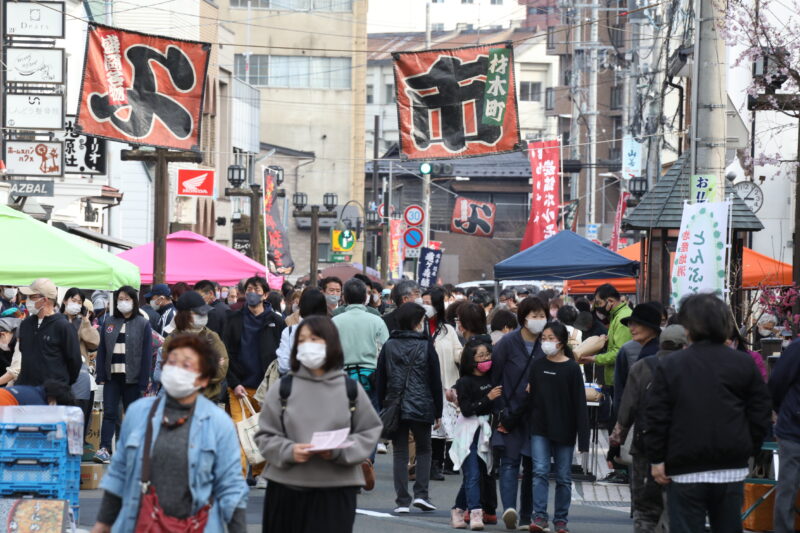
Spend your Saturday afternoons at “Yoichi” Market!
“Zaimokucho Yoichi” is held every Saturday from April to November in Zaimokucho, Morioka City. The 430-meter-long shopping street becomes a car-free zone, allowing pedestrians to enjoy the area. More than 100 stalls along the street are filled with shoppers and tourists that have come to taste a variety of delicious gourmet foods such as local beer, local sake, handmade dishes, local cuisine, and seafood while walking along the street in the festive atmosphere. Visitors can also enjoy purchasing seasonal vegetables, fruits, pickles, and wild vegetables at reasonable prices. Many popular local restaurants and eateries also participate in this famous event, which attracts many people from both within and outside of the prefecture. Some people seem to gather only to enjoy the market on Saturdays.
Location: Ihatov Avenue Zaimoku-cho
Morioka City Zaimoku-cho Shopping Street Promotion Association
7-42 Zaimoku-cho, Morioka-shi, Iwate
Phone|+81(0)19-623-3845
When| Every Saturday during April to November, from 15:10–18:30
Wanko Soba
Wanko soba, -a culinary entertainment experience and a local specialty.
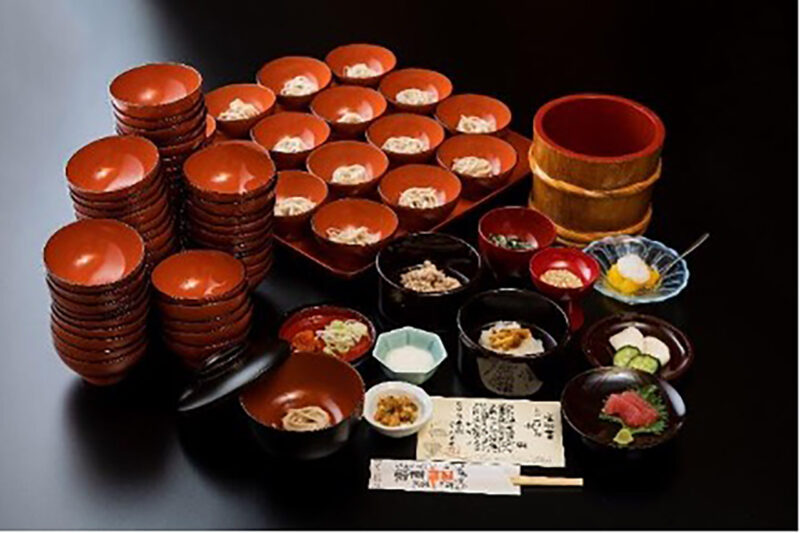
▲ A commemorative hand printed memento is given to those who finish 100 bowls of wanko soba at the Azumaya restaurant.
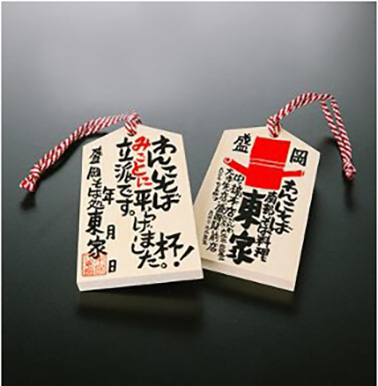
▲ A commemorative hand printed memento is given to those who finish 100 bowls of wanko soba at the Azumaya restaurant.
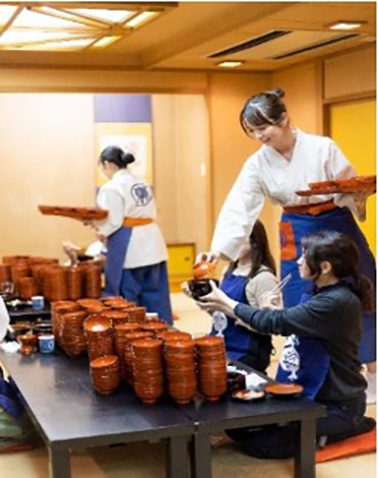
▲ Waiters pour buckwheat noodles into bowls and encourage the customers to keep eating.
All-you-can-eat Soba (buckwheat) Noodles with a Personal Server
Wanko soba, which embodies the spirit of Iwate hospitality, is very popular among tourists. The exquisite smooth texture soba noodles are served in a broth, carefully prepared every morning by the master chefs. Your personal server on stand-by will be ready to fill your bowl with soba noodles at a brisk pace. If you finish more than 100 bowls of soba, you will receive a commemorative hand printed wooden memento. You can enjoy the culinary entertainment to the fullest.It would be a fun opportunity to see how many bowls you can get through!
*Approx. 15 bowls of wanko soba is equivalent to one bowl of kake soba (one main soba meal).
Of course, there are other dishes other than wanko soba that you can try, including soba dishes and soba course meal (require reservations), as well as Azumaya’s katsudon (pork cutlet bowl) being a very popular option.
Azumaya has three restaurants, including the Ekimae branch in front of the station.
Azumaya Ekimae Branch
8-11-2F Morioka Ekimae Dori, Morioka-shi
Phone|+81(0)19-622-2233
Opening Hours| 11:00–15:00, 17:00–20:00 (last order)
Closed on Mondays (Open all days during summer)
Morioka Cold Noodles
The perfect trinity of soup, noodles, and kimchi
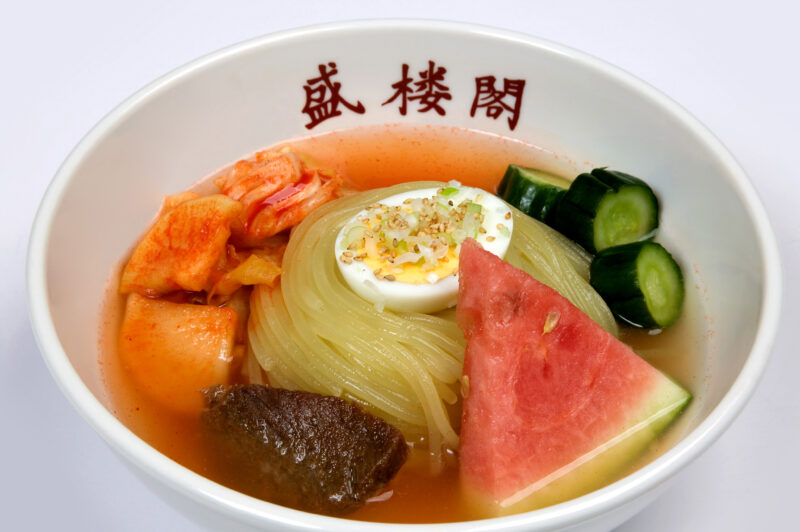
▲ Seirokaku’s signature dish, “Seirokaku Cold Noodle”
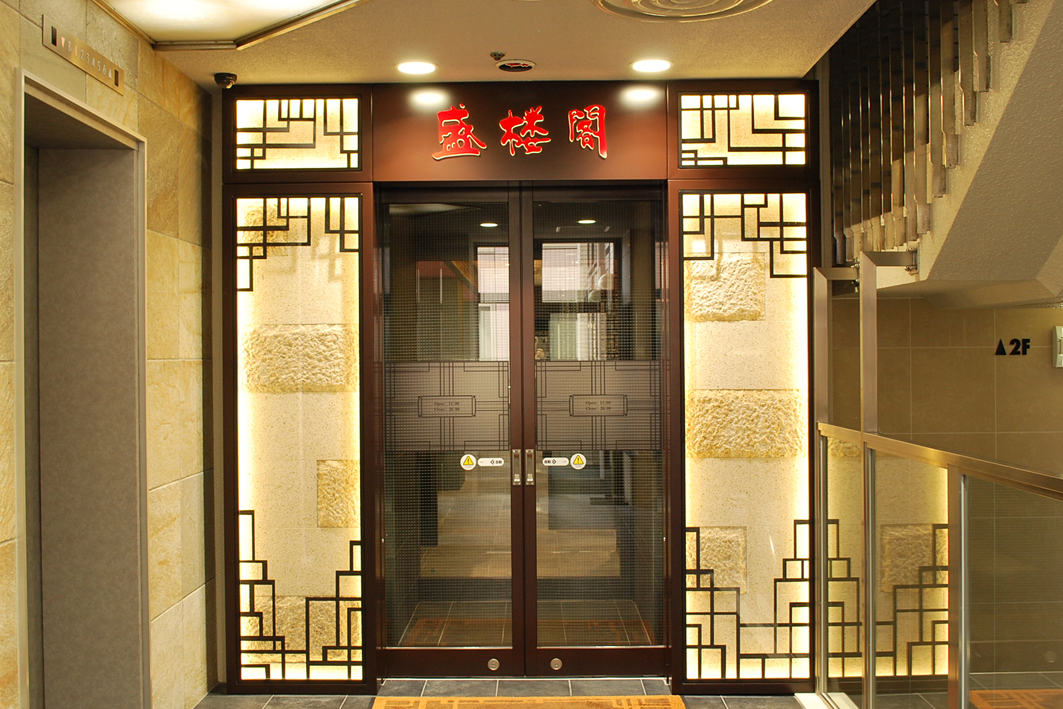
▲ Entrance to Seirokaku restaurant
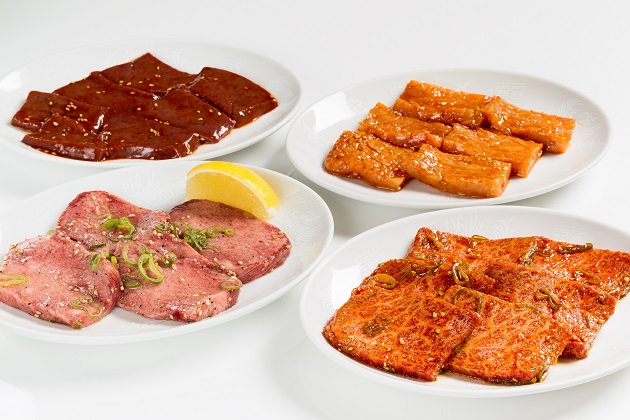
▲ Yakiniku Set Meal
An Authentic Yakiniku Restaurant Known for “Morioka Cold Noodles,” One of the Three Most Popular Noodles in Morioka
The restaurant’s signature “Seirokaku Cold Noodles” features a soup made with carefully selected ingredients including Japanese Wagyu beef, which is prepared slowly over a long process. The soup is light, yet has a deep flavor and sweetness. The homemade hand-kneaded noodles and kimchi are also a feature of this dish. Enjoy a bowl of the trinity carefully crafted. There are seven levels of spiciness to choose from, but we recommend the “separate spice” option, where the spicy ingredients come separately. This way, you can taste the original flavor of the soup and enjoy adjusting the spiciness to your liking. The restaurant is equipped with private rooms, so you can relax and enjoy your meal.
Seirokaku
2F, 15-5 Morioka Ekimae-dori, Moriokashi, Iwate
Phone|+81(0)19-654-8752
FAX|+81(0)19-653-1853
Opening Hours| 11am–2am (Open all year round)
Morioka Jajamen
Try the secret miso paste, a key to its deliciousness, at “Pairon”, the origin of Morioka jajamen.
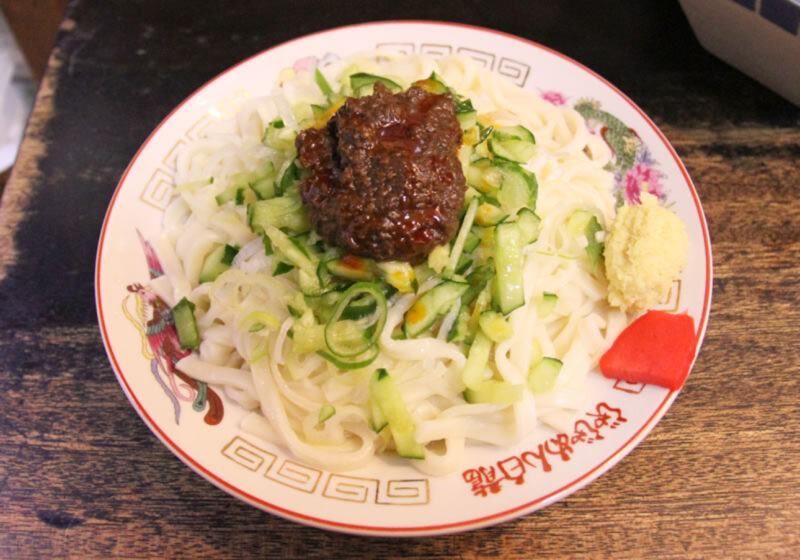
▲ The Original Morioka Jajamen
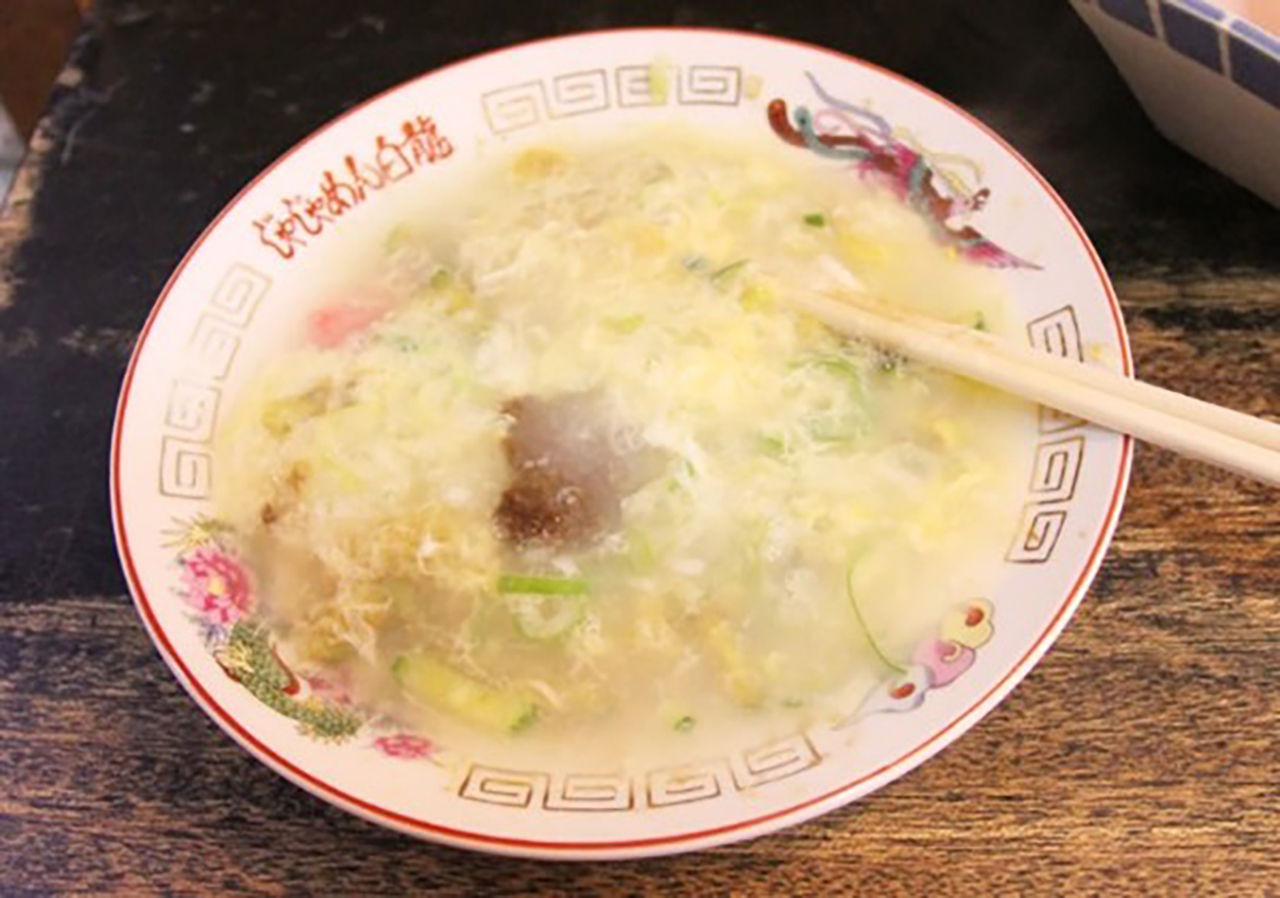
▲ Add some egg and say, “Chiitantan”
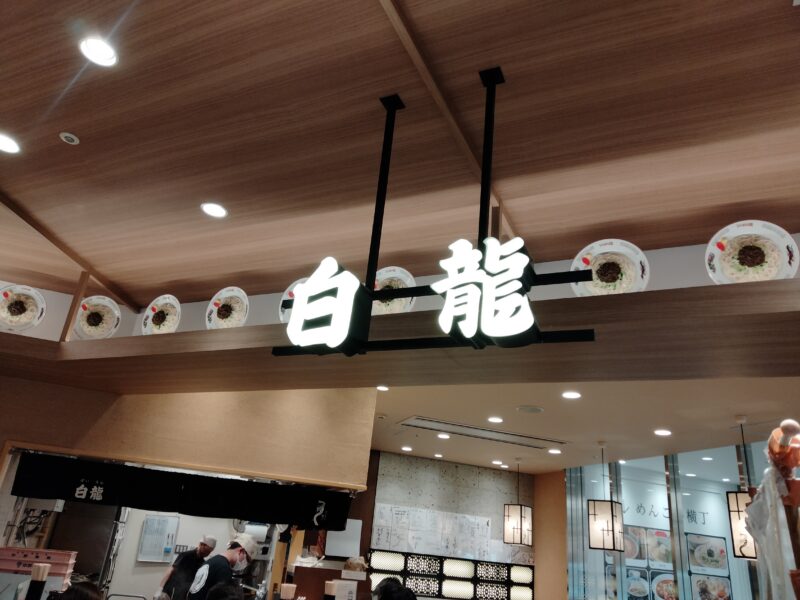
▲ Entrance to the restaurant (Fesan Branch)
Adjust and Eat It to Your Liking! Finish off the Dish with “Chiitantan”.
The dish features a secret miso paste, made by mixing and stir-fried ground meat, sesame seeds, shiitake mushrooms, and more than a dozen other ingredients with a miso base, which is combined with sticky, flat noodles. The unique flavor is unforgettable. Once you try it, you’ll want to come back again and again. The best way to enjoy the noodles is to add and mix raayu (Chinese red chili oil), vinegar, ginger, and garlic to your liking. Don’t forget to finish off your meal by making it a “chiitantan” (egg soup) and adding salt, pepper, raayu, miso for additional taste.
There are three branches of this store: the main branch, Fesan branch, and the Kawatoku branch.
Pairon Fesan Branch
1-44 Morioka Ekimae-dori, Moriokashi, Iwate
Phone|+81(0)19-623-5167
Morioka Station Building Fesan, 1st floor, Odense-kan
Closed days are irregular
Opening hours| 11:00–21:30 (Last order 20:30)
Local Beer
Enjoy Baeren Draft Beer on Tap at the Brewery-Owned Beer Bar
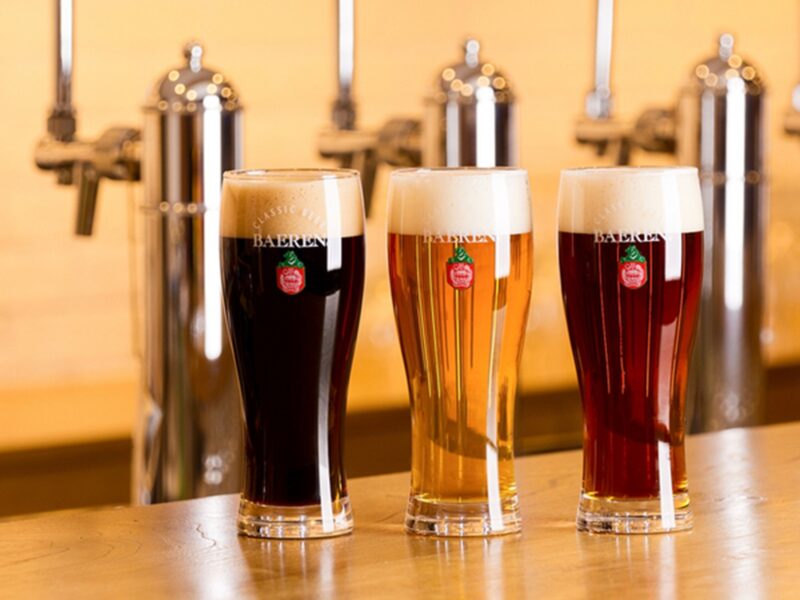
▲ 3 popular Baeren beers
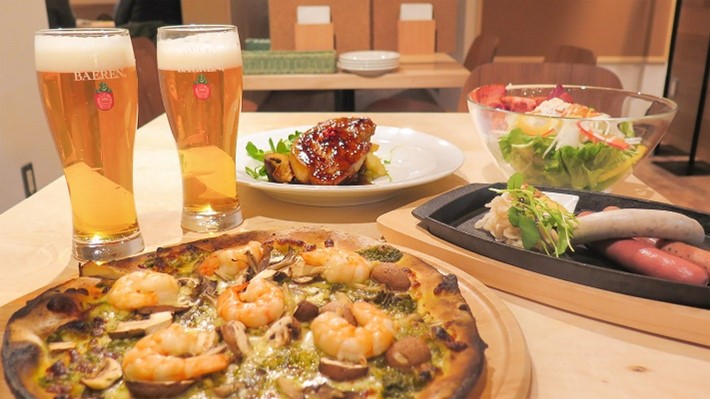
▲ Pizza and special sausages that go well with the beers
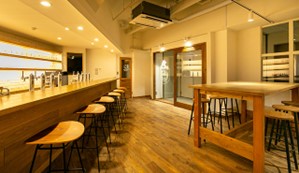
▲ Spacious restaurant area at the beer base
Come and Taste the Craft Beer at This Laid Back Restaurant, Served in Bottles with the Familiar Bear Symbol.
Beer Base Baeren Morioka Ekimae is a brewery-owned restaurant, which respects traditional European beer and is working to foster a beer culture rooted in the local Iwate area. The restaurant offers a wide variety of draft beers, including eight kinds of seasonal beers in addition to standard beers such as “Classic” and “Schwarz.” The restaurant also features dishes using local ingredients produced in Iwate Prefecture and freshly baked pizzas made in a dedicated pizza oven. The spacious counter seating makes it easy to stop by, even for first-timers or those wanting to enjoy a drink on their own.
Beer Base Bearen Morioka Ekimae
8-11 Morioka Ekimae-dori, Moriokashi, Iwate
Phone&FAX|+81(0)19-601-7110
Opening Hours|
Weekdays 17:00–24:00
Sat. 15:00–24:00
Sun. & Holidays 15:00–23:00
Closes at 23:00 on the last day of consecutive holidays
Open all year round (may be closed for New Year’s and company events)
■Contact
NPO Iwate Arts Support Center
3F Morioka Odori Bldg. 15-7 1-chome Minami Odori, Morioka, Iwat e 020-0874
TEL|+81-19-656-8145
FAX|+81-19-656-8146
MAIL| sanfes@iwate-arts.jp
Areas
Artists
-
Nakano Fuji no Kai
Bon odori dances from the area once called Nukanobu, spread from the southern Aomori to northern Iwate region, are called “Nanya doyara” and have long been enjoyed as one of the few forms of entertainment among the people. It is said that there are hundreds of varieties of bon odori, with each region and village having their own unique characteristics and variations.
In today’s world of diversifying entertainment, opportunities to enjoy the Nanya doyara with the participation of the people are decreasing, and the number of skilled performers are aging. Nakano Fuji no Kai, a preservation society founded by local volunteers in 2014, is working to enhance the appeal of its hometown by promoting the Nanya doyara, which is unique to the Nakano area of Hirono Town, to the next generation, and by expanding its activities into a wide range of PR and exchange fields. -
Ono Naru Ikazuchi Taiko
Ono Naru Ikazuchi Taiko was formed in 2000 by a group of young men and women who took a taiko drumming course. Today, the group has 28 members ranging in age from 5 to 46 years old.
The name, “Ono Naru Ikazuchi Daiko”, comes from Naru Ikazuchi Shrine, the town deity of Ono, in Hirono Town (formerly Ono Village). It is hoped that the taiko drumming will develop to become something that represents the former Ono Village, and be loved by the villagers as a prayer for a good harvest and family safety.
Trained in musical composition and performance by Warabi-za, a renowned troupe based in Akita Prefecture, the group is named after the image of lightning, and their drum music is valiant and charged with youthful passion and freshness. -
Kadono Hama Komaodori Preservation Society
During the Warring States period, the Nanbu Hachinohe Clan ruled the area from southern Aomori to northern Iwate. The Koma Odori dance is said to be a dance that depicts the scene of going into battle, and cavalry battles at that time. It is also said that the dance was performed to comfort the spirits of horses and ancestors who died in battle, as well as to ensure the safety of the horses, which always supported the people as war and farm horses.
Since 1978, the dance has also been performed by children at local elementary and junior high school athletic meets and cultural festivals to pass on the geinoh and to promote their physical fitness and growth.
There are 14 types of dances: 7 dances performed with horse-like costumes, and 7 stick dances performed with poles, swords, and long swords. -
Iwate Prefecture Iwaizumi High School’s Geinoh Club
Since its establishment in 1990, the club has performed at nine national competitions, three times at the National Theatre of Japan, and once in Paris. Many of the members not only belong to the club, but they are also a group of volunteers who aspire to pass on the Nakano Nanazumai dance. Although it is difficult to balance their activities during the peak season, they feel the need in spreading the local folk dance to as many people as possible, and to pass it on to younger generations.
It is said that the Nakano Nanazumai was created around the time of the “Seven Years of Famine” in the Tempo era based on the “Shittogi-jishi-mai” of the Kuromori Kagura from Miyako City. With the dancers divided into seven roles, and seven different dances comprise the whole, it is said that this is where Nanazumai (literally, seven dances) got its name. The dancers play the role of farmers who cultivate the fields, plant crops, protect them from vermin, and share the harvest, all in the hope of a bountiful gathering. -
Iwate Prefecture Kitakami Shonan High School’s Onikenbai Club
Onikenbai is a geinoh handed down by farmers in the Kitakami region of Iwate Prefecture, and is said to have begun approximately 1,300 years ago.
Under the guidance of Iwasaki Onikenbai, a Nationally-Designated Important Intangible Folk Cultural Property, the club of 50 members participated in the National High School Culture Festival held in Tokyo in August 2021, representing Iwate Prefecture.
They perform a brave and dynamic sword dance called “Katana Kenbai no Kurui”, a four-sided formation dance called “Hitori Kago”, and “Sanban-niwa no Kurui” which is rich in variety in both dance and music, among others.
Sanriku International Arts Festival 2022 REVIVE
– An FY 2022 Japan Cultural Expo Project Presented and Co-presented by Japan Arts Council and Agency for Cultural Affairs, Government of Japan

Organized by|Sanriku International Arts Committee, Japan Arts Council, and Agency for Cultural Affairs, Government of Japan
Co-organized by|Hachinohe City, Hashikami Town, Hirono Town, Kuji City, Noda Village, Fudai Village, Tanohata Village, Iwaizumi Town, Miyako City, Yamada Town, Otsuchi Town, Kamaishi City, Ofunato City, Rikuzentakata City, Sumita Town, Sanriku Railway Co., Ltd., Japan Folk Performing Arts Association, NPO Iwate Arts Support Center, and NPO Japan Contemporary Dance Network
Cooperated by|NPO Shinsai Regain, imajimu LLC, Tohoku Cultural Property Video Research Institute, Minna no Shirushi LLC
